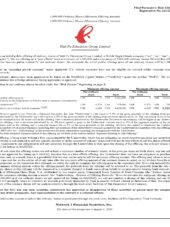Description
Military Laser Rangefinder Market
Military laser rangefinder systems provide targeting and upgraded weapon sights for laser-guided bombs, missiles, or precision-guided artillery munitions, such as the Paveway series of bombs or the AGM-114 Hellfire anti-tank missiles. These portable devices are carried by the armed forces, special forces, and forward air controllers (FAC); they consist of an optical sight and a laser emitter.
These systems may vary in size; they are usually mounted on tripods to ensure a stable aiming platform. Over time, military laser rangefinders have become a vital component in the defense industry.
There have been technological advancements in military laser rangefinders. Currently, a number of companies, such as BAE Systems, Northrop Grumman, and Thales Group, have invested in military laser rangefinders; this would significantly propel market growth.
The development of laser-guided weapons, introduction of safe laser rangefinders, modernization of warfare, and production of lightweight laser rangefinders are the key factors driving the growth of the global market.
Furthermore, the integration of laser rangefinders with unmanned aerial vehicle (UAV) and market penetration in emerging economies and target countries create promising growth opportunities for market players. Meanwhile, the health concerns associated with laser rangefinders and difficult operability in extreme weather conditions are expected to hinder market growth to a certain extent.
Regional Analysis
The global military laser rangefinder market is estimated to register a 6.70% CAGR during the forecast period from 2018 to 2023. In 2017, the market was led by North America with a 35.54% share, followed by Europe and Asia-Pacific with shares of 25.33% and 20.11% respectively. Asia-Pacific is the expected to be the fastest-growing market for military laser rangefinders.
North America dominates the global market and is likely to grow at a remarkable rate during the forecast period. The presence of key companies, such as Lockheed Martin Corporation, Northrop Grumman Corporation, and FLIR Systems Inc., results in the dominance of this region in the global market.
Moreover, the increasing military expenditure by the US Department of Defense (DoD) on miniature military rangefinders, in recent years, has resulted in a significant surge in demand in this region.
Key Players
Elbit Systems Ltd (Israel), FLIR Systems Inc. (US), Jenoptik AG (Germany), L-3 Technologies Inc. (US), Leonardo SpA (Italy), Lockheed Martin Corporation (US), Northrop Grumman Corporation (US), Saab AB (Sweden), Safran (France), and Thales Group (France) are the key players profiled in this report. Lockheed Martin Corporation and Northrop Grumman Corporation were the leading players in the market, accounting for nearly 50% of the market in 2017.
Objectives of the Global Military Laser Rangefinder Market Report—Forecast till 2023
• To provide insights into the factors influencing market growth
• To provide historical and forecast revenue of the market segments and sub-segments with respect to regional markets and key countries
• To provide historical and forecast revenue of the market segments based on product type, application, range, and region
• To provide strategic profiling of key players in the market, comprehensively analyzing their market shares and core competencies and drawing a competitive landscape for the market
Target Audience
• Military and defense organizations
• Government and regulatory authorities
• Military end users
• Laser rangefinder manufacturers, service providers, and distributors
• Military equipment manufacturers
Key Findings
• The global military laser rangefinder market in this report has been segmented, on the basis of product type, into man-portable and vehicle-mounted. The man-portable segment market is projected to register the higher CAGR of 7.74% during the forecast period.
• Based on application, the global military laser rangefinder market has been segmented into weapon guidance and detection. The weapon guidance segment market is projected to register the higher CAGR of 7.10% during the forecast period.
• The global military laser rangefinder market in this report has been segmented, based on range, into up to 15 km and over 15 km. The up to 15 km segment market is projected to register the higher CAGR of 6.50% during the forecast period.
• North America would dominate the military laser rangefinder market from 2018 to 2023. It is expected to register a CAGR of 6.92%% during the forecast period to reach a market size of USD 274.0 million by the end of 2023.
The regional analysis also includes
• North America
o US
o Canada
• Europe
o France
o UK
o Germany
o Rest of Europe
• Asia-Pacific
o China
o India
o Japan
o South Korea
o Rest of Asia-Pacific
• Rest of the World
o Middle East & Africa
o Latin America
Related reports: Global Ultrafast Laser Market Research Report – Forecast till 2027



